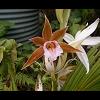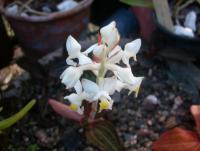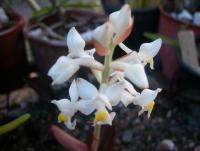-
Posts
516 -
Joined
-
Last visited
-
Days Won
7
Content Type
Profiles
Forums
Events
Blogs
Gallery
Store
Posts posted by katu
-
-
Hey anodyne, I apologise, it was pre morning coffee I made that post.
I believe it was actually the Spanish that first introduced tobacco as a medicinal herb to Europe, but the English were most definately the first to refine the process of snuff production in terms of fermentation and ageing . They still make IMHO the best snuff in the world!
Sorry, I try not to post anything i'm not pretty sure of, my apologies...
Edit:spelling
-
Alfamiller, whilst I admire your idealism I don't think there's a farmer out there that would be happy with randoms strolling through his field with the intention of mushroom hunting.
I did however have a mate who lived in NNSW that had an agreement with a farmer that allowed him onto his property to collect poo for his garden ..
-
 2
2
-
-
I've seen similar on some A.myriostigma of mine, but only ever on grafted plants. Not quite a pup, not quite a flower?? No idea to be honest. Some kind of forced mutation from grafting. They tend to just drop off after a bit. No pics, sorry..
Would be interested to see if you could graft one and what the results would be if successful. Please keep us updated!
-
 1
1
-
-
When I said Americas I was refering to the country pre-white colonisation and yes my understanding was that snuff use was how tobacco was consumed and it was only "smoked" in ceremonial settings.
Fermenting and ageing were techniques that were introduced by the English after its introduction to them by the French, obviously much later than the periods you are interested in..
Edit:wording
-
Thanks for the responses all, keep em coming!
katu, I'm just curious - did you mean "highly alkaline" ash here, or are you talking about using some kind of alkaloid-containing plant ash?
Hehe, yeah sorry, dislexia or a Freudian slip?? , that would be highly alkaline ash..
-
I'm a bit hazy on this but I seem to remember reading somewhere that once harvested it is laid down and inch or two deep on the ground to sweat (cure) for a day or so then hung to dry. That simple.
It was then pounded in rosewood bowls with an high alkaloid ash.(Snuff use pre-dates smoking in the Americas, and was therefore the first method of tobacco consumption). Smoking came later..
Edit:wording
-
 3
3
-
-
what's arid art macro?
-
Thanks for your reply's guys!
Gtarman, mate I completely agree with you in that it is indeed plausable that it has been utilised in some way, but the only referance I can find in it being used in the method you mention is in one thread on Nexus. In that same thread there are also some contradictory posts in terms of activity. Also, a plant showing some activity doesn't necessarily automatically qualify it as having a history of indigenous useage, and vise versa. I'm not saying forums aren't a great source of knowledge but despite the recent interest in Aya from various disciplines of science ranging from Med. Chem. Anthropology and so on I can not find one legitamate paper of it having any history of Ethnobotanical use. That said indigenous plant knowledge in the Amazon could be argued to surpass plant knowledge of virtually any other culture, and i'd take one dudes word who has spent time amongst the indiginous Amazonians over a bag full of Scientists.
Thanks for that link Paradoxical, I have heard it tested negative for beta carboline Alkaloids. haven't time to watch it now but will in the next day or so and post back.
Thanks again guys, I do love this forum
-
 1
1
-
-
Hey Anodyne, thanks for your reply!
To clarify am wondering if it has any use as an ethnobotanical in any form from an indigenous point of view, so yes purely traditional use.
If it is an admixture am not interested in whether it adds to any form of activity, just that it is indeed an admixture. Or if it has any other medicinal use.
I'm just trying to get clarification on whether or not it is a traditionally employed ethnobotanical plant in any form.
In years past there has been a massive surge of somewhat dodgy oversees vendors offering various sorts of unsustainably harvested plant material of various natures. These business IMHO are purely profit driven and are playing their part in the destruction of the Amazon. So I would not put it past them to sell a product, claiming for nothing other than fiscal reasons that it has been used for whatever said purpose.
There is also the possibility that at sometime in the field there has been a miscommunication or misidentification between a traditional guide and a ethnobotanist resulting in misinformation. We may or may not of seen this before like in the case of P.carthagenensis (Schultes&Hofmann, 1992)
Or finally that it is a traditionally employed ethnobotanical plant in one way or another.
These are merely the whimsical ponderings of a amatuer plant head
But yes, to reiterate, am merely interested in its use as an Ethnobotanical plant.
Edit:spelling/wording
-
 1
1
-
-
Hey all,
For some time now i've been trying without much luck to research whether this plant actually has any true use from an ethnobotanical stand point.
It seems to me that apart from a few vague reports on Nexus, which when read closely, seem IMHO unreliable at best, that the only persons actually claiming that it has been used traditionally are the oversees vendors flogging the root bark, and one local nursery selling live plants, that does nothing other than vaguely refer to internet forums.
When you look at websites which are devoted to botany and/or nomenclature their is no mention whatsoever of any indigenous usage of this liana.
Was wondering if anyone has come across any legitimate papers or has any knowledge other than the general air of speculation that seems to surround this vine.
I'm not saying that it doesn't have a history of indigenous usage, nor am I convinced that it does, am merely trying to start a conversation about this somewhat mysterious Malpighiaceae.
-
 2
2
-
-
Cheers beeralternative, i'll put up for grabs some...
HBWR
P.harmala
S.rhombifolia
R.corymbosa
Rocket
Blue hopi corn
Pidgeon Pea
Sml bag of yohimbe bark
-
 1
1
-
-
Good luck finding seeds
-
I read about a study done recently in QLD where researchers analysed wastewater to determine the net consumption of illicit drugs.
There is also a number of research projects being done in Australia and internationally to determine the environmental impact of waste water containing traces of both illicit and pharmaceutical drugs escaping the treatment process.
So....short answer, maybe
Edit:spelling
-
Have just finished "The Last of Us", one of the most epic games i've ever played, skyrim's another favorite.
For anyone that's in their 30's and remembers growing up on Double Dragon I strongly advise Double Dragon Neon. Absolutely hilarious, nostalgia gold!!!
-
 1
1
-
-
-
^^^Yup, It's falun gongs bible, which IMHO is china's version of Scientology..
-
 1
1
-
-
Got the missus to do it for u bro
-
 2
2
-
-
-
Welcome to the forums mate
-
Have always found your posts enlightening Michael, hope everythings ok and hope to see you back here soon..
-
Welcome to the forums mate, got some nice scops there..
-
Nice one mate, will go do it now
-
 2
2
-
-
gone
in Ethnobotany
She's a beauty mate!
-
 1
1
-
-
Hi Starling welcome to the forums,
it looks like you have a impressive collection and I look forward to trading with you in the future.
But....Well first and foremost I agree with Zelly, the vast majority of members on this forum are collectors, why else would their be so many cv.'s of Trichocereus and what not if it were otherwise. Wouldn't one just get a decent bridgesii and mass clone it, similar to how I imagine dope growers operate. What about all the threads on other cacti. orchids and the like.
And with all due respect, If one were to consume a Psychedelic drug in any form in order to communicate with god or what they perceive to be, how is that any different to your path. Psychedelics are not "recreational" as you put it. They are sacraments. And there are various people from all different walks(PHD Scientists, Shamans, Buddhists) that would agree with me.
I don't believe for a minute that Hendrix or any of the artists of that era would of achieved the heights they did in terms of expression if it were not for acid. LSD was the catalyst for the 60's movement. Just because you yourself felt that drugs "didn't help you" why assume it of others?
I recently watched a talk on the parallels between traditional Psychedelic use and Meditation that featured a number of prominent doctorate holding scientists and Tibetan Monks. Both sides came to the conclusion that they were different paths to the same ends.
I'm sorry if this came out overly aggressive, it was not my intention, but your post just seems a little self righteous for a buddhist.
-
 11
11
-




Traditional tobacco curing techniques
in Ethnobotany
Posted
Thanks mate
But yes, that sounds about right .
The history of tobacco is an amazing subject IMO, a most twisty path indeed!